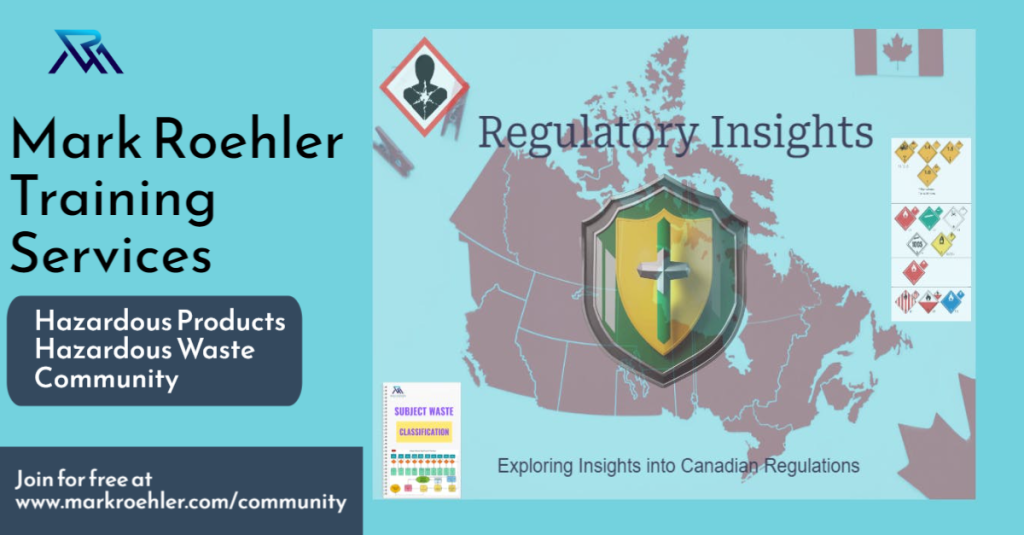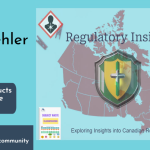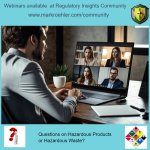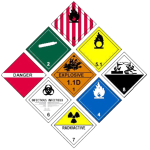Why Regulatory Insights Was Built for Engagement, Not Just Information
When it comes to regulatory compliance, especially in the world of hazardous products and waste, it’s easy to feel like you’re navigating alone.
You might find yourself reading regulations late at night, cross-referencing TDG and Ontario Reg. 347, or trying to interpret WHMIS responsibilities in a practical, site-specific way. There’s no shortage of information out there — but *information alone* isn’t always enough.
That’s exactly why the Regulatory Insights space at [www.markroehler.com/community] was built — not just to provide guidance, but to foster connection.
Let’s explore the difference between having an **audience** and building a **community** — and why that distinction matters deeply for Canadian professionals like you.
📣 Audience = One-Way Street
An **audience** is passive. They receive content, watch webinars, read blogs, or attend training. It’s helpful, yes — but it’s mostly one-directional.
You could think of it like a classroom where the instructor does all the talking and the learners sit back and take notes. Valuable? Sure. But limited.
🤝 Community = Shared Knowledge, Real Connection
A **community** is interactive. It’s built on conversations. Members ask questions, share experiences, and exchange best practices. The learning flows in multiple directions — and that’s where the real magic happens.
That’s what **Regulatory Insights** is all about.
Why This Matters in Hazardous Products and Waste
If you handle or manage hazardous waste or dangerous goods in Ontario (or anywhere in Canada), you already know how complex the regulations can be.
They’re not just about memorizing parts of the TDG Act or Ontario Regulation 347 — they’re about **interpreting** them in a way that makes sense for your specific facility, product, or waste stream.
Here’s why a **community model** works better for this work:
✅ Regulations Can Be Confusing
Whether it’s subject waste classification, waste manifesting, or safety marks on shipments, real-world examples from others in similar roles are *incredibly valuable*.
Hearing how someone else handled a similar scenario can help you avoid mistakes or find a simpler solution.
✅ Missteps Can Be Costly
Errors in classification or documentation don’t just cause delays — they can lead to spills, injuries, and regulatory penalties.
That’s why learning from others’ experiences is just as important as knowing the law.
✅ There’s Strength in Numbers
In our space, there are few places to go where professionals can speak freely about what’s working, what’s not, and what’s changing.
Regulatory Insights is that place.
✅ The Landscape Is Always Evolving
TDG updates. Provincial changes. New interpretations. It’s a lot to track alone — but in a shared space like Regulatory Insights, someone’s always paying attention, and willing to share.
Why You Should Join (and Contribute)
Regulatory Insights isn’t just a resource hub — it’s a **living network** of Canadian professionals committed to safety, clarity, and compliance.
When you join and participate, you’ll:
🚀 Get real-world advice from others who’ve been there.
📚 Access exclusive tools and checklists (like our TDG Classification Checklist).
💡Share your own experience — and become a trusted voice in your industry.
🧭 Help shape future training resources based on real needs.
👥 Build relationships that support your professional growth.
Bottom Line?
**Regulatory compliance isn’t a solo job — and it shouldn’t feel like one.**
If you’re a Canadian professional responsible for hazardous products or waste, join us at www.markroehler.com/community
Let’s move from isolation to collaboration.
Let’s stop talking *at* people, and start building something *with* them.
Let’s turn an audience into a community.
**Join. Ask. Share. Grow.**
We’re better — and safer — together.








